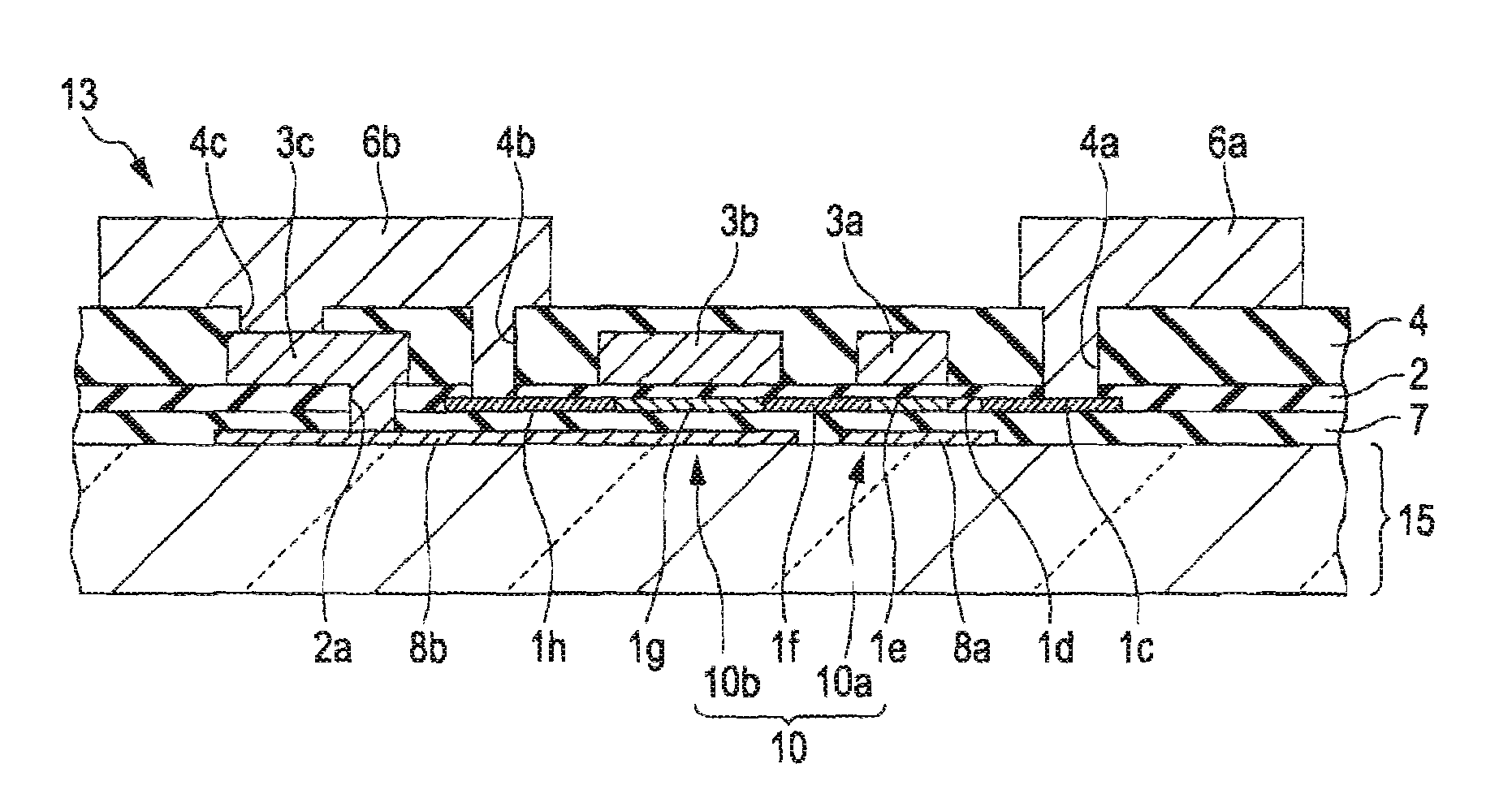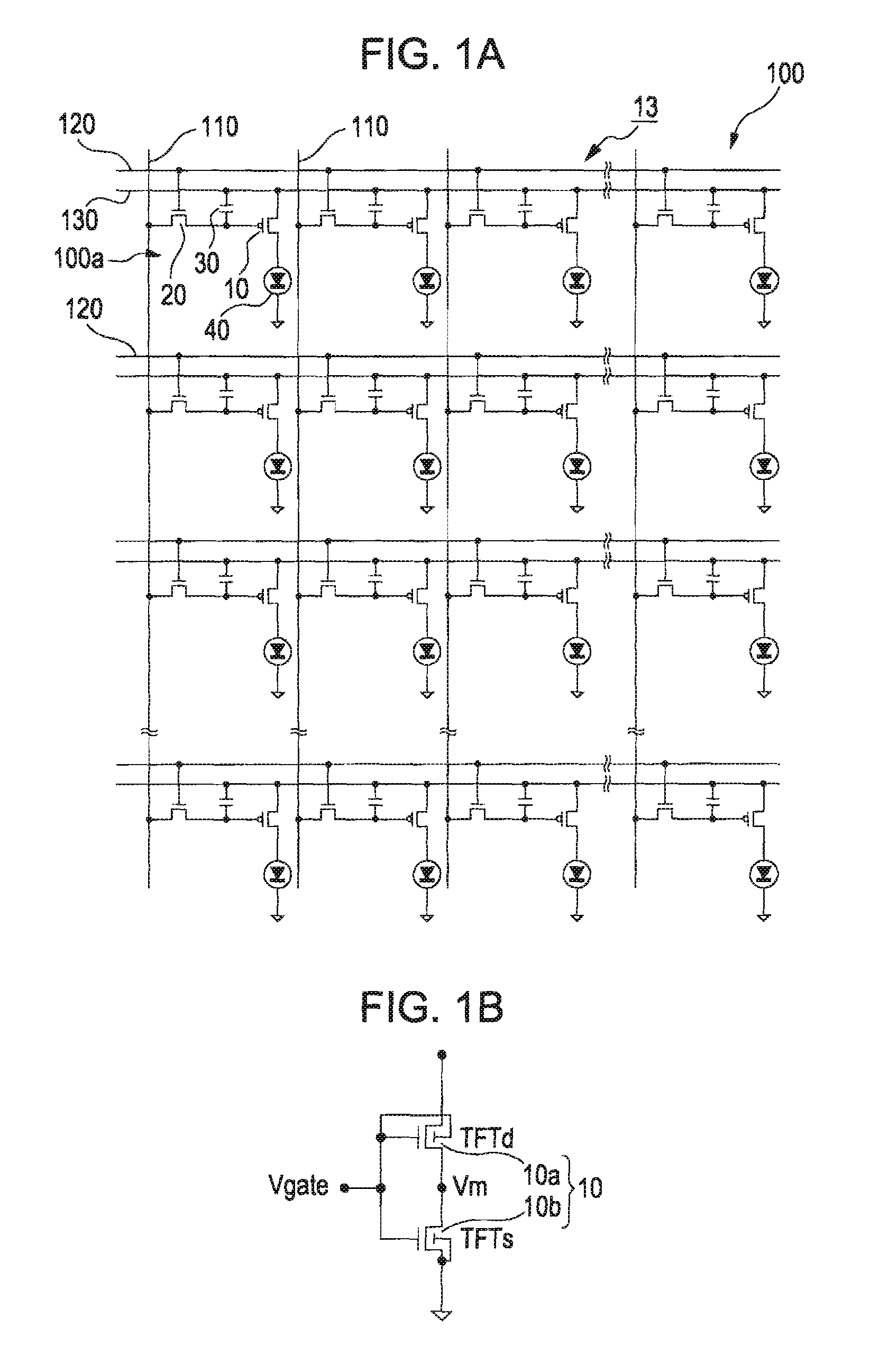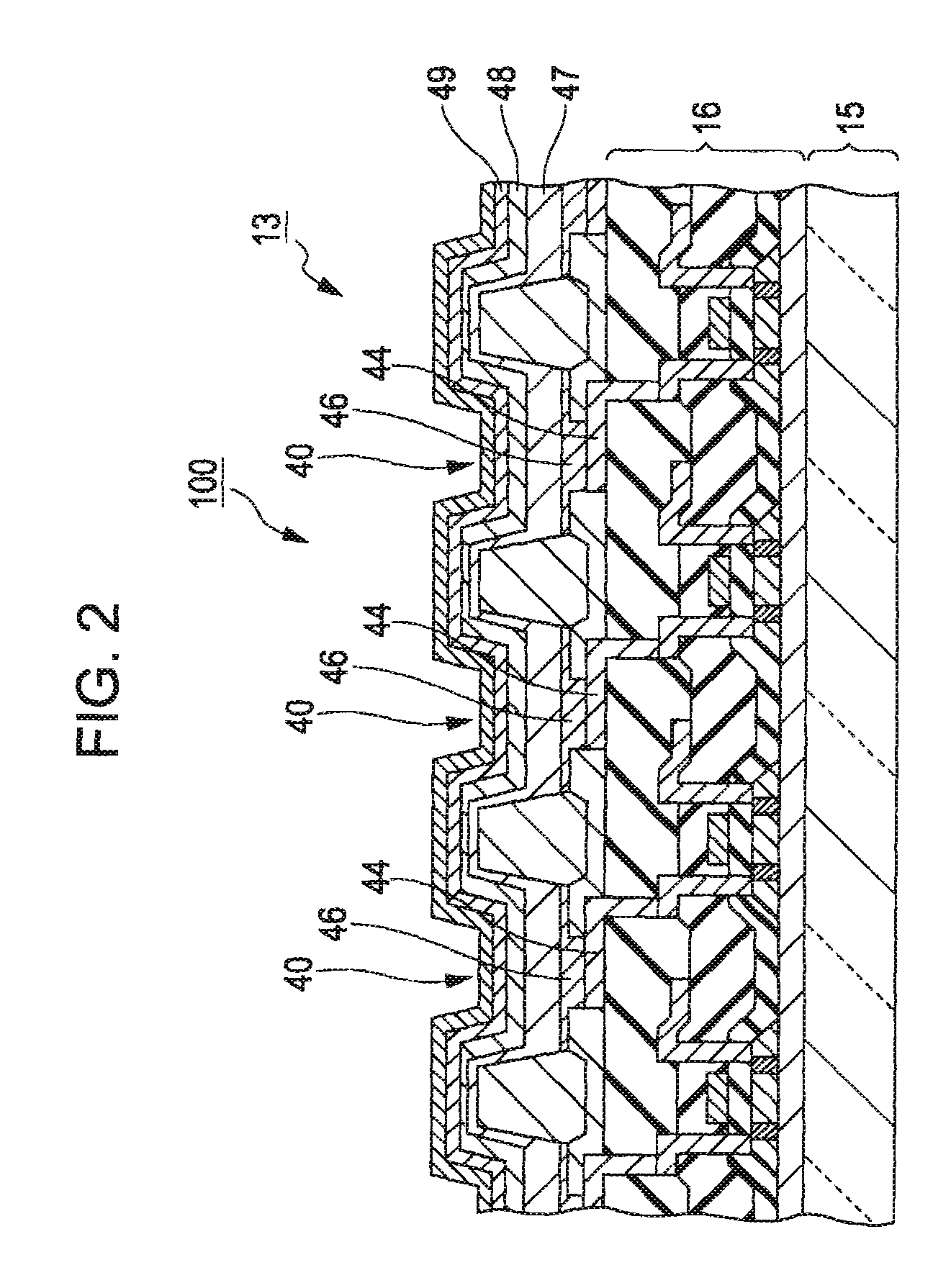Semiconductor device and electro-optical device
a technology of electrooptical devices and semiconductors, applied in the field of semiconductor devices and electrooptical devices, can solve the problems of difficult to expect constant current operation, insufficient ldd structure alone, and insufficiently suppressing the kink phenomenon. , to achieve the effect of reducing leak current, improving contrast, and uniform image display
- Summary
- Abstract
- Description
- Claims
- Application Information
AI Technical Summary
Benefits of technology
Problems solved by technology
Method used
Image
Examples
embodiment 1
General Configuration of Light-emitting Device
[0042]FIG. 1A is a general circuit diagram that schematically illustrates an example of the electric configuration of an organic EL device to which the invention is applied, whereas FIG. 1B is an equivalent circuit diagram of a thin film transistor for electric current control to which the invention is applied. A light-emitting device (apparatus) 100 that is illustrated in FIG. 1 is configured to drive an organic EL element 40, which emits light when a driving current flows through the organic EL element 40, by means of a thin film transistor. Such a type of light-emitting device does not require any backlight because the organic EL element 40 emits light in a self-luminous manner. As another example of advantages thereof, it offers less angle-dependent visibility.
[0043]The light-emitting device 100 has a plurality of scanning lines 120, a plurality of data lines 110 that extend in a direction orthogonal to the extending direction of the...
improvement example of embodiment 1
[0081]In the exemplary embodiment of the invention described above, the drain-side back gate electrode 8a is formed at a region that overlaps the whole length of the first channel region 1e. In addition, the source-side back gate electrode 8b is formed at a region that overlaps the whole length of the second channel region 1g. However, as illustrated in FIGS. 9A and 9B, it is preferable that the source-side back gate electrode 8b should be formed at a region that overlaps not the whole length but the partial length of the second channel region 1g; more specifically, it is preferable that the source-side back gate electrode 8b should be formed at a region that overlaps the source end of the second channel region 1g but not the drain end thereof in such a manner the drain end of the source-side back gate electrode 8b lies under a “halfway point” that falls short of, that is, does not reach, the drain end of the second channel region 1g when viewed in a direction going from the source ...
example of embodiment 1
Variation Example of Embodiment 1
[0083]In the first exemplary embodiment of the invention described above, both of the drain-side back gate electrode 8a and the source-side back gate electrode 8b are formed. As a variation example of the configuration described above, the source-side back gate electrode 8b only may be formed.
PUM
 Login to View More
Login to View More Abstract
Description
Claims
Application Information
 Login to View More
Login to View More - R&D
- Intellectual Property
- Life Sciences
- Materials
- Tech Scout
- Unparalleled Data Quality
- Higher Quality Content
- 60% Fewer Hallucinations
Browse by: Latest US Patents, China's latest patents, Technical Efficacy Thesaurus, Application Domain, Technology Topic, Popular Technical Reports.
© 2025 PatSnap. All rights reserved.Legal|Privacy policy|Modern Slavery Act Transparency Statement|Sitemap|About US| Contact US: help@patsnap.com



